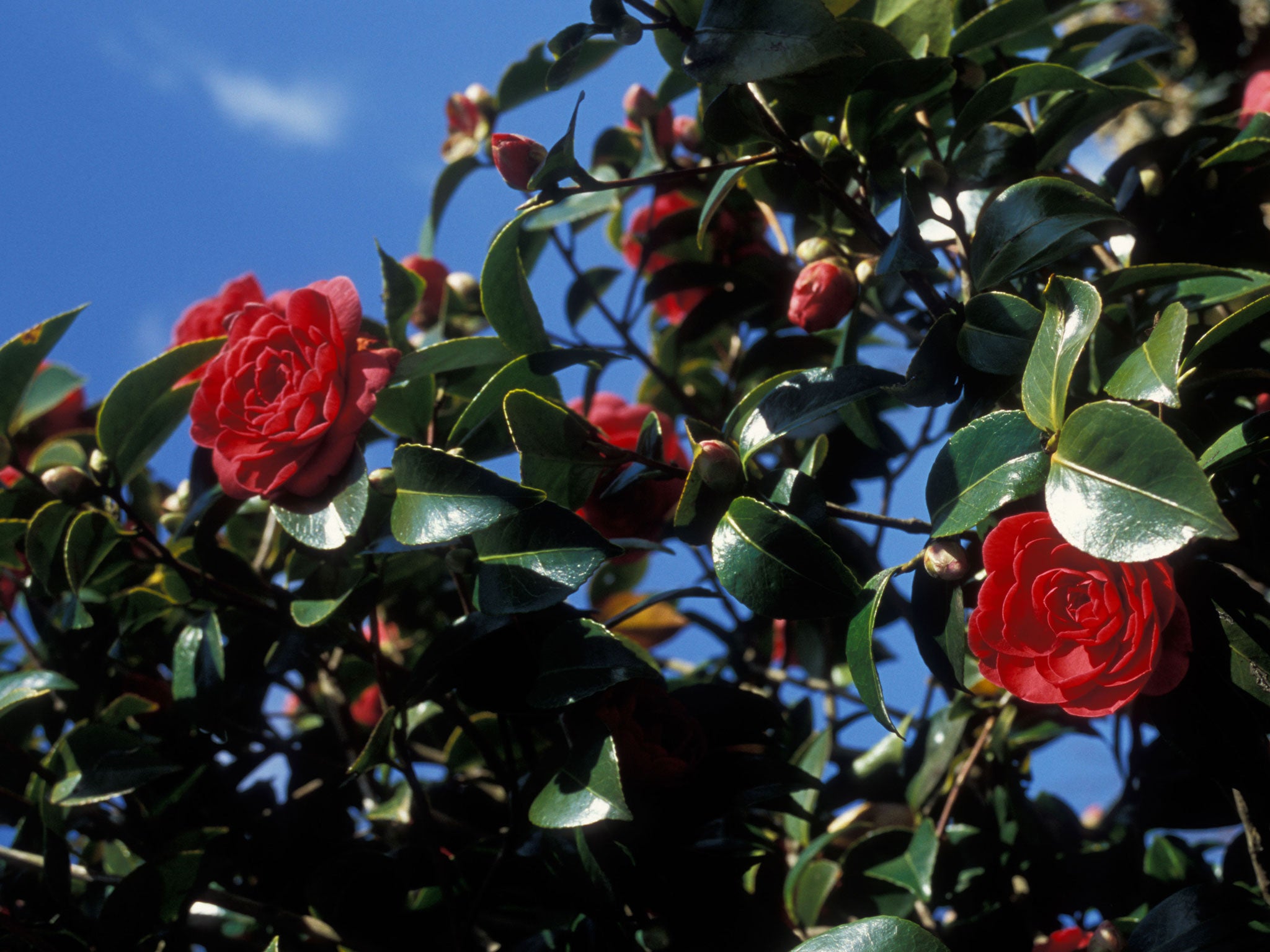Anna Pavord: When creating a hedge, camellias have the edge over yew
Our gardening correspondent spotted a thick and healthy hedge on a walk from Holland Park to Notting Hill

Since the Tube station has been shut for a while, I walked down to Holland Park from Notting Hill this week, which gave me a great opportunity to peer into the front gardens of the houses down Holland Park Avenue. It's a noisy old thoroughfare and I wasn't surprised that the people who owned the houses (or their minions) had tried so many different ways of pretending that the road wasn't there.
Some of the houses still had the handsome railings that must have been installed when the places were built. But usually there was some extra protection – and I'm not surprised – set behind the railings. The worst solutions took the form of high, solid barriers along the boundary with the pavement. Very horrible. And very antisocial. It has always been the way that in towns, front gardens are almost public spaces. This is not where you choose to sit in your deck chair. It's a place to entertain passers-by, introduce the house, and humanise it. These prisons people make for themselves are hideous.
The best solutions were always provided by plantings of various kinds: yew, which is traditional; holly, which was a more unusual choice and absolutely lovely, with the light glancing off the handsome leaves; sometimes a mixed hedge, which didn't work as well as the plain ones, because it didn't have enough room to express itself. In a relatively short run, the plain evergreen hedges looked best and provided an elegant introduction to the frontage behind. They are also practical because an established evergreen hedge will baffle noise. And trap dust.
There were two boundaries that looked particularly good and they were both made from camellias, which was unexpected but effective.
One consisted of standard camellias lined out behind the railings. I liked this solution because it paid respect to the fine railings themselves. The trunks of the camellias rose up vertically behind them and did not interfere with their architecture. The heads of the plants billowed out and joined up above the top of the railings. So the boundary was made more effective, but not aggressively so. The second planting of camellias took the form of a hedge, planted out behind the railings. It was thick and healthy, but because it was doing so well, slightly obscured the railings themselves.
The hedge was in flower, which of course is a great bonus. Yew won't do that for you. When flowering had finished, then you could work along the hedge with secateurs, snipping off the twigs that stick out too much from the line.
The standard camellias could be tackled at the same time, if necessary. But bit by bit with secateurs, not an overall barbering with shears. Camellia leaves are quite big and you want to avoid the ugliness of sliced foliage if you can.
The most important thing in a situation such as this will be the preparation of the soil. The hedge will often be sitting in a strip of ground with pavement on one side and "hard landscaping" on the other. So the area available to trap and store rainwater will be relatively small, compared with the need of the camellias to have access to it. Evergreens have to look after their foliage 12 months of the year. Winter gales desiccate leaves and put the plants under stress.
Availability of water matters even more in summer; camellias being dry at the roots is the single most common cause of flower buds dropping off in late summer, leaving little to look forward to in spring. So, before planting, you need to incorporate as much humus as possible into the soil. This can be any solid kind of stuff such as well-rotted manure or well-composted leaves that will act like blotting paper in the soil, hanging on to moisture and releasing it slowly as it's needed.
Then, every spring, before the ground has dried out, I'd mulch with more humus or compost or some kind. This will supress weeds and gradually feed the plants as well as slowing down the rate at which moisture evaporates from the soil. The plants aren't cheap; it is worth sorting out a maintenance routine that will keep them as happy as possible.
To produce the lustrous, shining healthy foliage that sets off the flowers so well, a camellia needs a soil on the acid side of neutral (a pH between 5 and 6.5). The best camellia soils are not only acid but rich in humus, which is why they do so well in gardens such as Abbotsbury where they flourish under old oak trees. In the wild, camellias grow under the protection of a high forest canopy, and sheltered, dappled shade is what they like in gardens too. When choosing, remember that whites are touchier than reds about frost, wind and wet.
Subscribe to Independent Premium to bookmark this article
Want to bookmark your favourite articles and stories to read or reference later? Start your Independent Premium subscription today.

Join our commenting forum
Join thought-provoking conversations, follow other Independent readers and see their replies